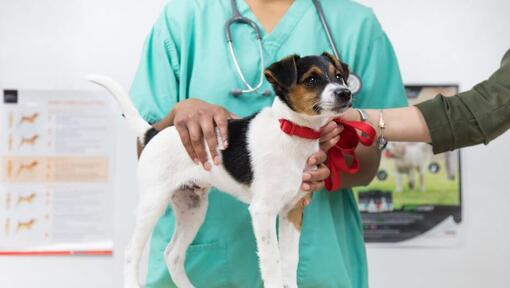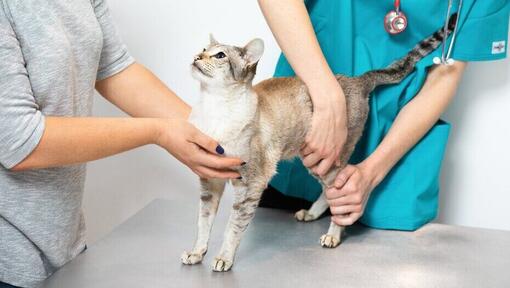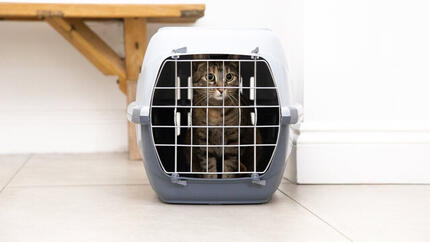Tips on caring for our pets’ health, effectively but efficiently

We’re all aware that the cost of living has become a huge issue: inflation is higher than it has been for decades and most people’s earning power is not keeping up. At stressful times like these, as we saw during the Covid 19 pandemic, for many of us the comfort and joy we get from the relationships we have with our pets will be immeasurable. But any unexpected costs associated with caring for our pets can of course add some extra worry.
As a practising vet and long-term pet owner, I’ve pulled together some of my top tips for owners around how best to effectively manage keeping your pets healthy, while incurring as few unnecessary costs as possible and without compromising the well-being of your beloved furry friend.
As a vet, I know what an important part we play in helping to maintain the long-term health of your pet as well as stepping in if emergency situations arise. Sometimes prevention can be the best route to avoiding unexpected or emergency bills.
Routine preventive vet costs
The routine treatments your pet will need include a once-yearly health check and vaccination review, as well as preventive parasite control. These are important aspects of pet care: preventing problems tends to be cheaper and safer rather than waiting until you have to deal with a crisis. To keep these routine costs under control, it’s worth having a detailed discussion with your local vet and coming up with a tailored plan for your needs and lifestyle.
Vets are now used to carrying out individualised assessments of pets’ needs when it comes to vaccinations and parasite control. A small dog that lives in an apartment, which goes for very local walks and is doing minimal dog-to-dog socialising, for example, may have very different needs to a suburban terrier who spends his time running through ditches, meeting other dogs and sniffing around the undergrowth, or a farm dog in the countryside.
And an indoor cat will have different needs to one that roams outside. A lifestyle assessment should be carried out for each pet, and the preventive approach can then be tailored appropriately.
Once you have decided on what’s needed, you can then investigate the special offers that your vet may have available: many clinics now have pet health plans that allow you to make savings on regular preventive care if you sign up for a year at a time. Be aware that although parasite control products (for fleas, ticks and worms) sold via pet shops and supermarkets may initially appear to be cheaper, they are often not as comprehensive or effective. As an example, there are currently no over-the-counter wormers that are effective against lungworm, which can be a fatal disease. The only effective preventive products are sold as prescription-only medications from your vet.
Unexpected illnesses and accidents
What about the unexpected vet bills and stresses caused by illnesses and accidents?
There are three ways that these can be managed more effectively, and the risks reduced – although never completely eliminated.
- First, minimise the likelihood of illnesses and accidents affecting your pets: If you’re choosing a pedigree dog or cat, researching any potential genetic health concerns will allow you to know what the future could hold and what treatments might be needed further down the line. You can find Purina’s Breed Selector tool that provides lots of practical information to help with your decision here. I highly recommend potential new owners to look into breed health and behaviour characteristics before choosing any pedigree pet, as all too often people will make choices based on looks alone.
- You should also do your research on reputable breeders if buying a pet and ask lots of questions about the history of your new pet if you’re choosing to adopt. A full history might not be available, but shelters will check pets on arrival so should be able to inform you of any long-term treatment needed etc.
- Adopting a pet can be a great choice and with so many animals in need of homes I would always encourage people to think about whether they can give a pet a second chance at a loving home, rather than simply looking for a puppy to buy.
- Keep your dog under control at all times: if they do not have a reliable recall command, teach them how. If you’re not sure where to start, it’s a good idea to look for a qualified and professional dog trainer to help you. While it of course means an investment of time and a bit of money – the long-term benefits to you and your pet will be far outweighed if you have a safe and happy dog out on walks. If this isn’t possible or until they are trained, use a long (e.g. 5 metre) training leash rather than letting them run free. If you have a puppy, Zigzag is a great resource for behaviour and training.
- Learn about the common toxins that can affect cats and dogs from obvious garden poisons to human foods that can be unexpectedly toxic to pets, such as chocolate, garlic and onions for dogs and cats; lilies for cats and grapes for dogs – you can find the most common toxins for dogs and cats on Purina’s website.
- Exercise safely with your dog: avoid dangerous activities such as throwing sticks or excessive encouragement of leaping to catch balls.
- Be aware of seasonal risks such as heat stroke in the summer, fireworks phobia at Guy Fawkes and New Year (take preventive measures to protect your pet from sudden loud noises), and “turkey tummy” at Christmas (don’t give your pet too many leftovers after Christmas dinner).
- Keep your pet at a healthy lean weight. Up to two thirds of pets are overweight or obese, and this is linked to a number of expensive illnesses, from diabetes to heart disease to arthritis.
- For dog owners, make sure that regular exercise is part of your pet’s daily routine: typically dogs enjoy around half an hour twice daily, but this can vary depending on your dog as no two are the same. Purina has breed guides that give guidance on the ideal amount of exercise. Well exercised dogs are likely to have better behaviour as well as optimal physical health. For indoor cats, encourage regular exercise (around 15 minutes, 2 to 3 times a day) with interactive toys, vertical towers and even teaching them a trick or two.
- Take your pet’s behaviour seriously: on average owners should spend around fifteen minutes a day training their pets (in short bursts which add up to a total of fifteen minutes). Make sure they don’t get bored: use enrichment activities such as stuffed Kong toys, Lickit mats, and hide and seek games to keep them physically and mentally engaged.
Even if you are careful, sometimes illnesses or accidents still happen; they can be an unavoidable part of life. To avoid potential financial distress on top of the inevitable emotional distress at these times, pet insurance makes sense. There’s a multitude of insurance providers, and it’s important to choose the one best suits your lifestyle and your pet.
There are some key points:
- If you can accept a higher excess payment, you should be able to find a cheaper premium, so that you are covered for the most serious and expensive costs in case of critical illness. But be aware that this means you will have to pay a larger portion of the up-front cost of the bill yourself if you do have to make a claim.
- As a general rule, non-pedigree pets are cheaper to insure than pedigree pets.
- Read the so-called “fine print”: this is not as difficult as it sounds. Just read the policy in detail, and if there are aspects of it that you do not understand, talk to your local veterinary nurse about what it all means. There is no point in buying the cheapest insurance if it will not cover costs for specific conditions or incidents at the time you most need it. This is also where knowing any relevant information around breed health characteristics for your particular pet can come in very useful when choosing pet insurance.
- You should also know whether your policy will cover a condition for life, rather than just for the first year of any treatment that’s needed – again a policy for life might mean more expensive monthly payments, but end up being incredibly valuable if your pet does develop a long-term health issue.
- Find out about the full offering from your pet insurance company: sometimes they offer extra “freebies” such as access to a veterinary helpline. This can be very useful as a way of discovering if you really do need to go to the vet, or if a simple home treatment may suffice. Vets and vet nurses can often give highly effective advice on the phone without seeing your pet, after a detailed discussion with you.
If, despite everything, you do find yourself running up a large bill at your vets, do ask them about the possibility of a re-payment plan. Vets understand that everyone’s circumstances are different and in most cases will try to be as helpful as possible. Finally, in very difficult times, you may be able to get help from a pet welfare charity with veterinary care. Your vet may be able to advise you on any routes worth exploring in your local area.
Our pets bring many benefits into our lives, with positive effects for our mental and physical health as well as giving us a sense of comfort and companionship that enhances our daily lives. In these financially stretched times, our aim should not be to try to manage without our pets; rather, we need to find ways to enhance our pets’ lives alongside our own lives, saving money in wise ways. Ultimately, most of what pets bring into our lives is free of charge: the friendship, the contentment, the entertainment, the joy of being together.









